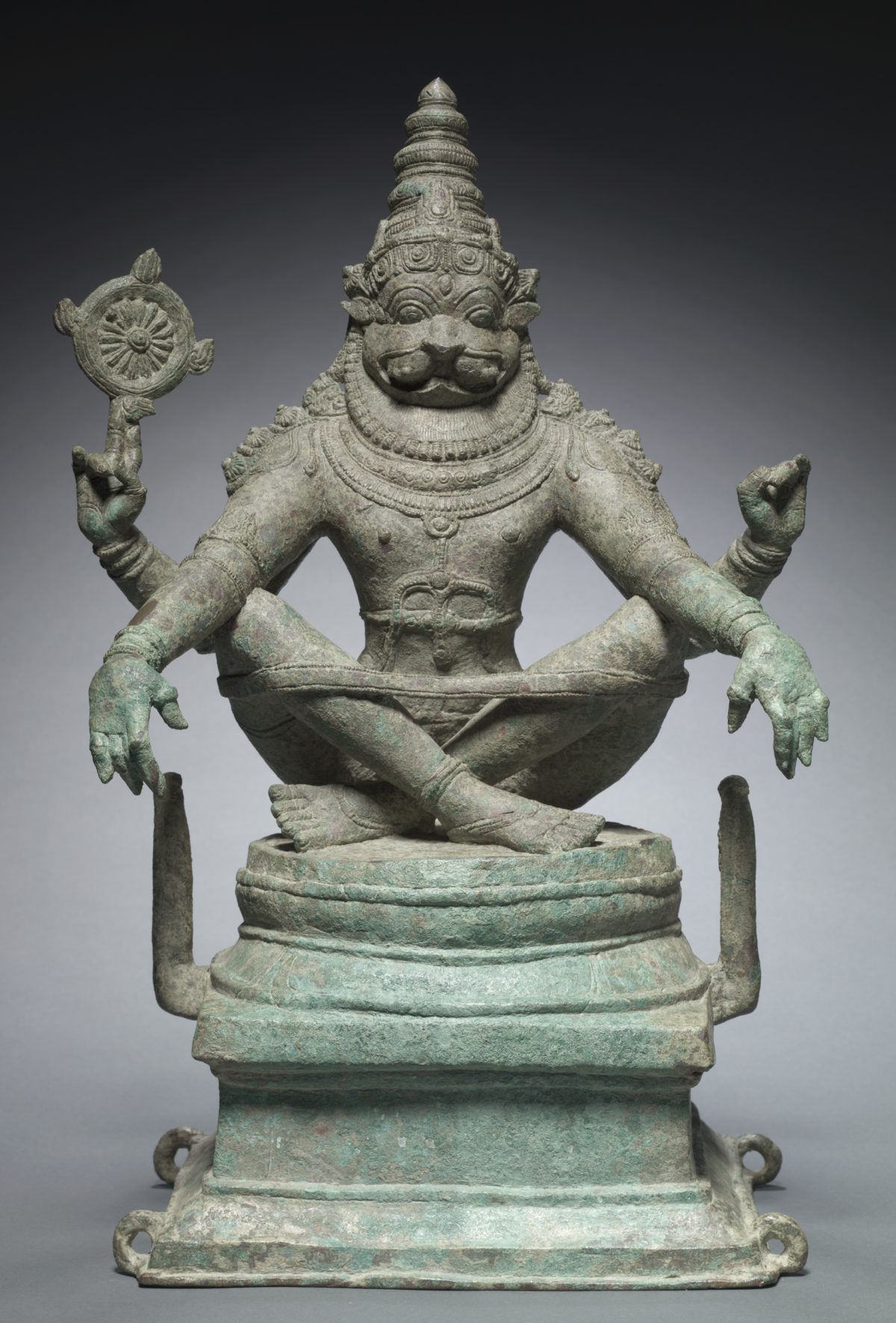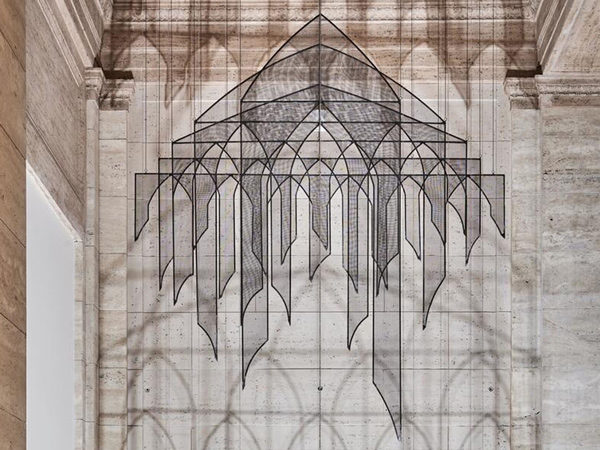Activity
An Introduction to Yoga: The Art of Transformation
Objective: Introduce students to the history of yoga in India.

Vishnu in his man-lion incarnation as Yoga-Narasimha
Yoga: The Art of Transformation
Yoga is regarded around the world as a path to health and spiritual insight. Many people are aware of its origins in India. But the motivations that compelled countless individuals to pursue yogic paths over the past 2,500 years are less well known. Few people are familiar with yoga’s rich diversity—the different schools of practice that developed over the centuries, and yoga’s varied meanings for practitioners and those they encountered.
Yoga: The Art of Transformation (on view at the Asian Art Museum from February 21–May 25, 2014) delves into a largely untapped resource—visual culture—to illuminate key aspects of yoga practice as well as its hidden histories. With sculpture, paintings, illustrated manuscripts, prints, photographs, books, and films, it is the first art exhibition to explore the centrality of yoga in Indian culture.
Three galleries present important aspects of yoga that entered the realm of representation between 100 CE and the 1940s. The first gallery explores key elements of yoga practice, yogic conceptions of the body, and the role of teachers. The second gallery looks first at the importance of place in yoga practice, and the associations between yoga and power. Next, it considers ways yoga practitioners (yogis) have been understood and imagined in Indian and Western cultures. In the third gallery, through the works of Indian philosophers, medical practitioners, and yoga teachers, we locate the origins of many features of modern yoga as a regimen for health, fitness, and spiritual well-being.
The exhibition’s 135 works shed light on yoga’s meanings and philosophical depth, the practice’s significance within Indian culture and religion, its movements across communities, and the artists who transformed profound concepts into material form.
What Is Yoga?
The practice of yoga has varied in different times and places. Growing and changing while retaining—and often reinvigorating—key practices, it developed out of a variety of South Asian sources that coalesced over the centuries into a number of distinct traditions.
Between about 500 and 200 BCE, wandering ascetics developed practices for controlling the body and breath as a means of stilling the mind. Their goal was to transcend the suffering inherent in human existence. Texts from around 400–200 BCE laid the groundwork for much of what later came to constitute yoga. These texts introduced the concept of an individual self that is equivalent to the all-encompassing Absolute, a supreme, immeasurable, and transcendent essence that permeates all creation. A yogic physiology of the body was also first outlined in this period.
A pivotal text, the Yoga Sutras by Patanjali, was compiled between the second and fourth centuries from earlier yoga and meditation traditions. Its overarching purpose, as with nearly every other Indian religious and philosophical system, was to resolve the problem of suffering. In subsequent centuries, numerous traditions emerged, including new texts that adapted, expanded, and reinterpreted the knowledge base that constitutes yoga.
The Origins of Yoga
Over the past 120 years, these traditions have been adapted by Indian as well as Western teachers into the many paths of yoga familiar to modern practitioners. The range of practices that we know as yoga today is the product of some 2,500 years of transformation.
Yoga’s origins are debated. Composed around 2000–1000 BCE, the Vedas, collections of lyric verses in Sanskrit that constitute the primary texts of orthodox Hinduism, contain fleeting references to flying long-haired sages that suggest an ancient mystic tradition. But it is not until centuries later, between 500 and 200 BCE, that we find the strongest evidence for the emergence of yogic techniques and goals.
In northern India, men and women seeking to transcend suffering renounced society to devote themselves to meditation and austerities. Building on tenets of the Vedas, these renouncers shared a belief in the perpetual cycle of inherently painful lives (samsara) and in the idea that actions produce results (karma). Their radical insight was that their bodies and minds contained the potential to correctly perceive reality. Upon attaining this perception, they believed they would become enlightened—blissfully released from the cycle of suffering.
Hindus, Jains, and Buddhists—followers of ancient India’s main religions—developed traditions for worshiping enlightened renouncers, and monks, nuns, and lay people began commissioning images of these figures. The earliest images are Jain and date to the third century BCE, around the time that the Hindu Kathaka Upanishad, the first systematic account of yoga, was composed.







